What is a Variegated Rubber plant, you ask? The main difference between a regular rubber plant and a Variegated Rubber Plant are the color of its large leaves. The regular Rubber Plant has dark green leaves, but the Variegated Rubber Plant has leaves with shades of red, yellow, cream and green.
With its variegated green and white leaves and creamy white margins, the Ficus elastica ‘Tineke’ is one of the easiest houseplants to grow! There are dark pink veins that separate the green leaves into two halves. The new growth emerges with a pink tint that gives the variegated Rubber Plant its unique look.
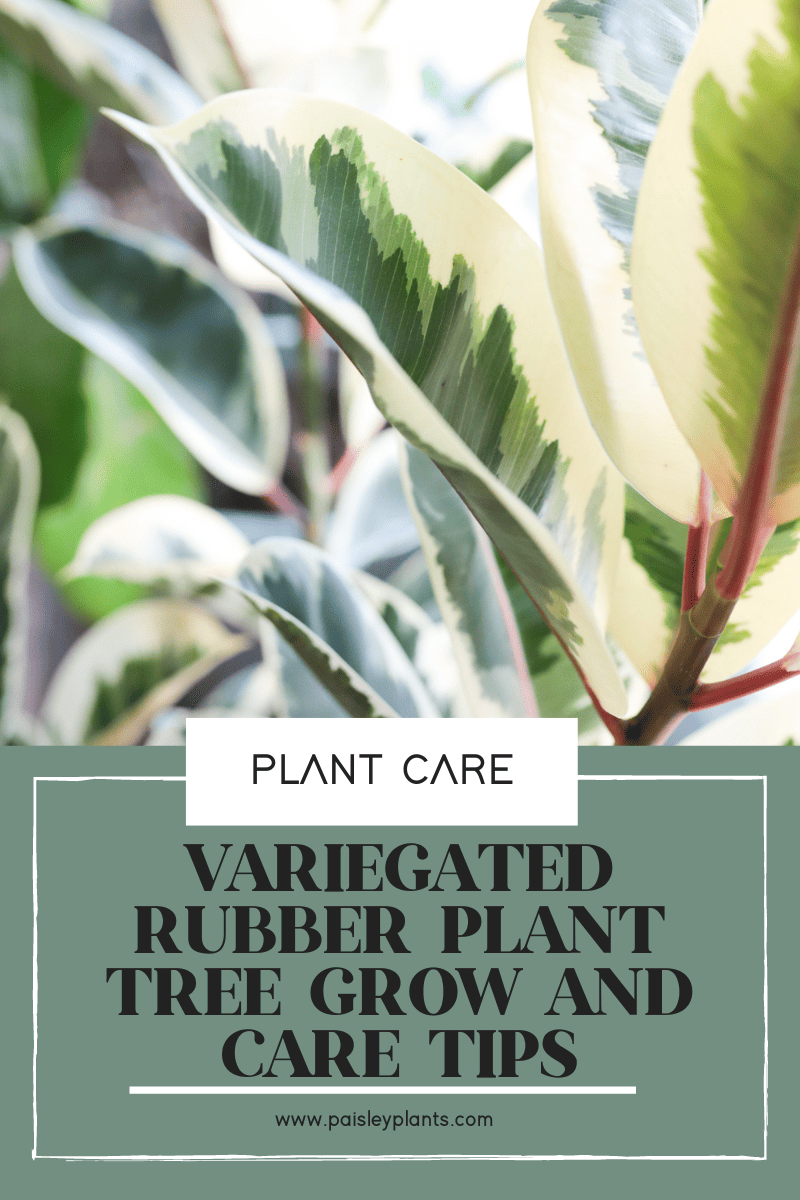
Table of Contents
Background and History
The Variegated Rubber Tree is also known as the Ficus elastica ‘Tineke’ and originated in Southeast Asia. These Rubber Tree plants can grow into a small bush if left unpruned when grown outdoors. They can grow from 3-6 feet tall and 2-4 feet wide at maturity.
Another interesting fact about these plants is that they filter and purify the air of formaldehyde. They are perfect for any inside space to help with this and also add a touch of multicolored beauty to your environment.
One thing you’ll want to keep in mind though, is that these plants are very toxic. The milky sap from the leaves is very sticky and milky and contains a compound called caoutchouc. It’s what gives rubber its elasticity. It can cause skin irritation if it gets on your skin.
If you do have small children or pets, just be sure to keep them away from the rubber plant. This will prevent them from having any problems which could lead to vomiting, diarrhea or oral irritation. It could also lead to affecting the kidneys, liver, and even the nervous system.
Variegated Rubber Plant Care Tips
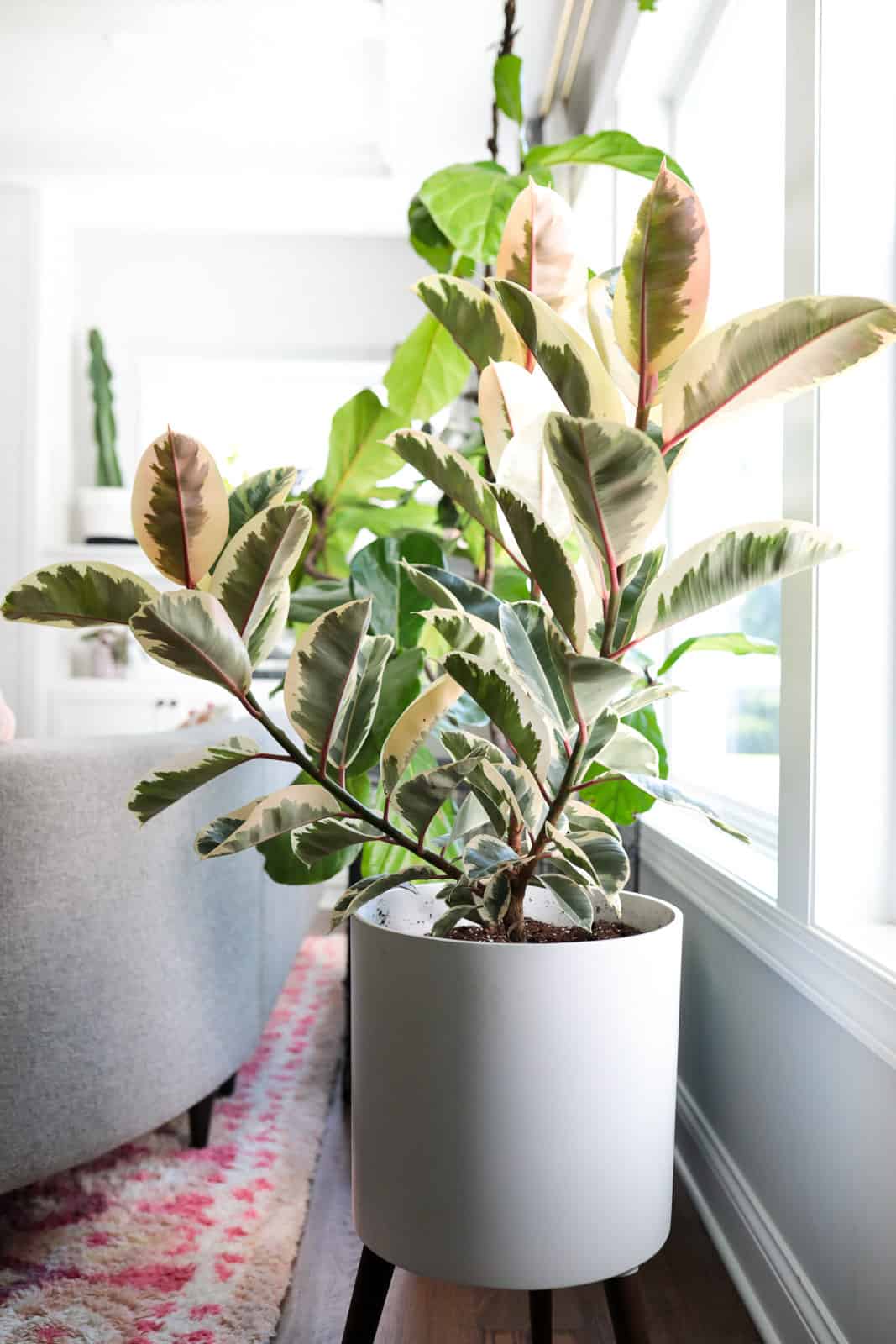
Watering Requirements
Always check to be sure the top one to two inches of the soil in your ficus tineke is dry before watering. Once dry, water the plant thoroughly. Allow the water to drain through the drainage holes at the bottom of the pot until the excess water quits running through.
Avoid getting the leaves of the plant wet and be sure you don’t let the plant sit in water. This will only lead to root rot. Typically, you will need to water your plant once a week in the summer months and about every two weeks in the winter months.
Light Requirements
Your tropical plant will need to be kept in a place where it receives enough light, preferably bright, indirect sunlight for between three to six hours per day. Direct bright light is not recommended for these indoor plants as too much light may scorch or burn the leaves. Filtered sunlight is the best and the brighter the light the more the variegation will come out on the larger leaves.
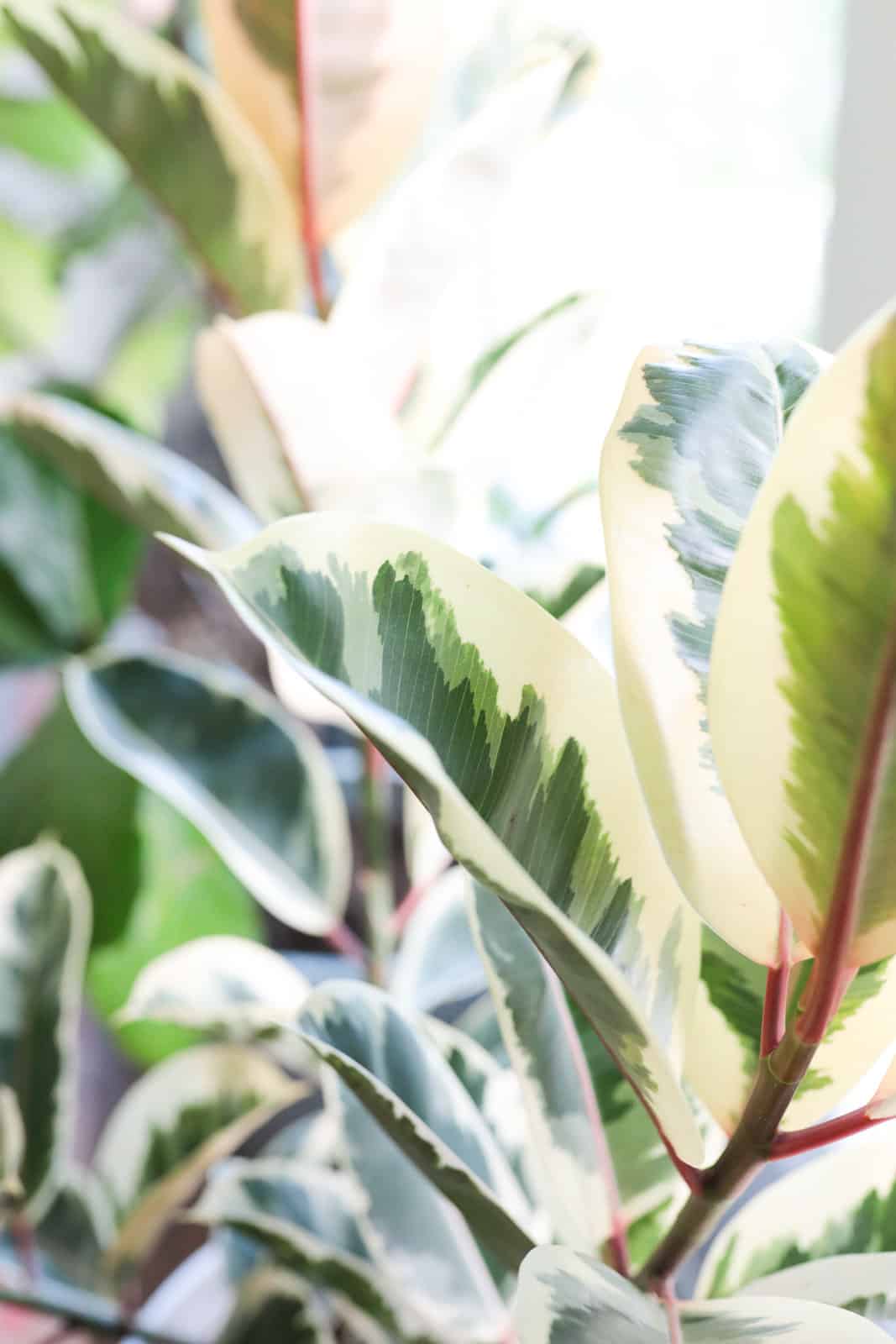
Soil Requirements
One of the best combinations for potting mix for a Variegated Rubber Plant is a potting soil mixture that contains one part peat, one part pine bark, and one part sand. This combination will remain moist without turning soggy.
These plants do not like to sit in water, so you need to be sure the soil you use is well draining. Be sure to have good drainage in the pot you use also. You want to avoid giving a chance for the roots to develop root rot by sitting in too moist of conditions for any length of time.
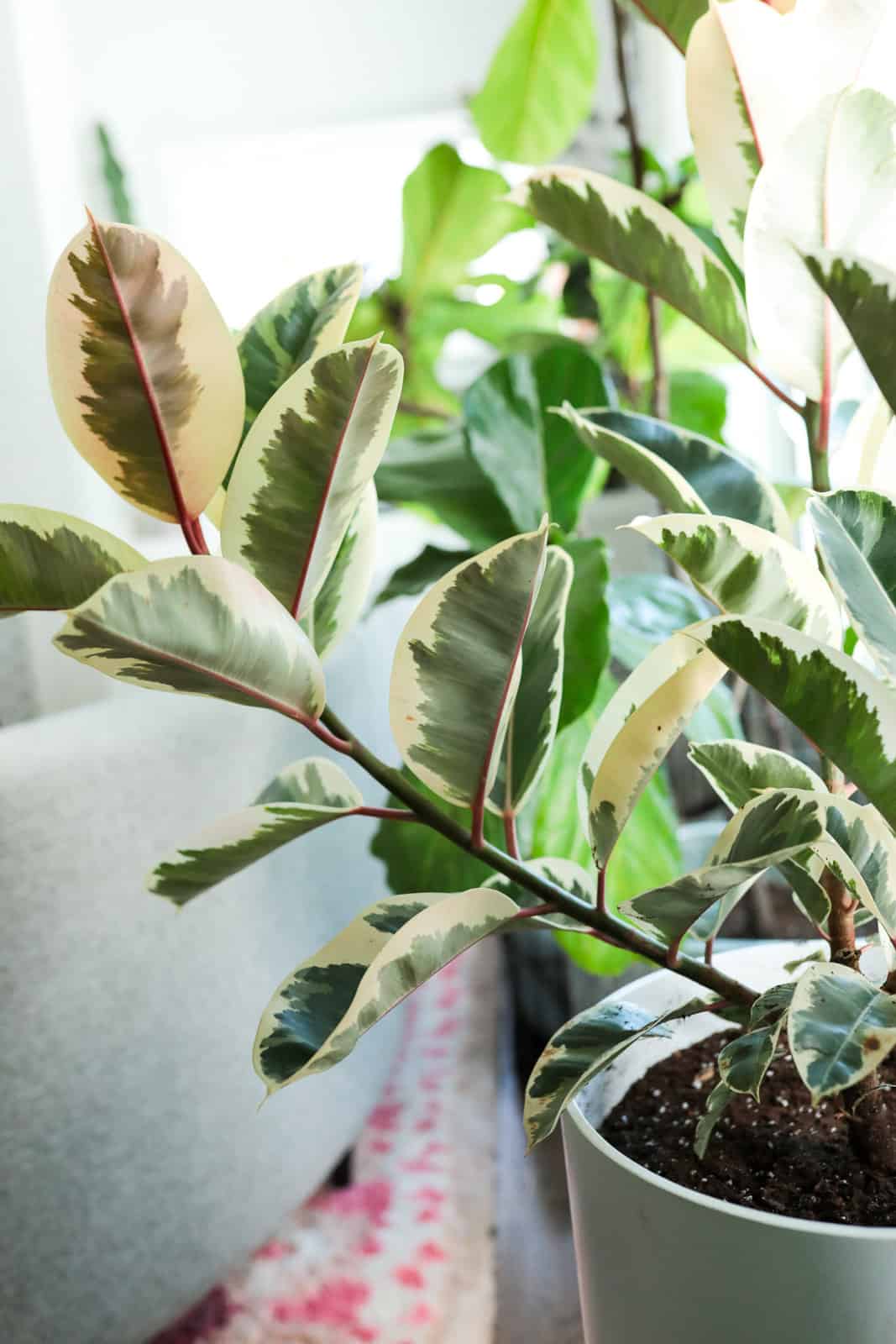
Fertilizer Requirements
The best time to give your plant some fertilizer is during the early spring and summer months, which are the height of the growing season. Use a water soluble liquid fertilizer. This should be done once every two weeks. Be sure to not use too much fertilizer or it can burn your plant.
Temperature and Humidity Requirements
The ideal temperature for your Variegated Rubber Plant is room temperature – specifically this ranges between 60 and 65 degrees F at night and 75 to 80 degrees F during the daytime. Avoid temperatures below 55 degrees F though. Watch that your plant isn’t exposed to sudden drops in temperature or cold drafts.
Because these plants are native to Southeast Asia, they prefer more humid conditions than some other plants. Any increase in humidity in your environment will definitely benefit your plant. A range of between 45% and 50% humidity is a good range to keep in mind for your plant’s benefit.
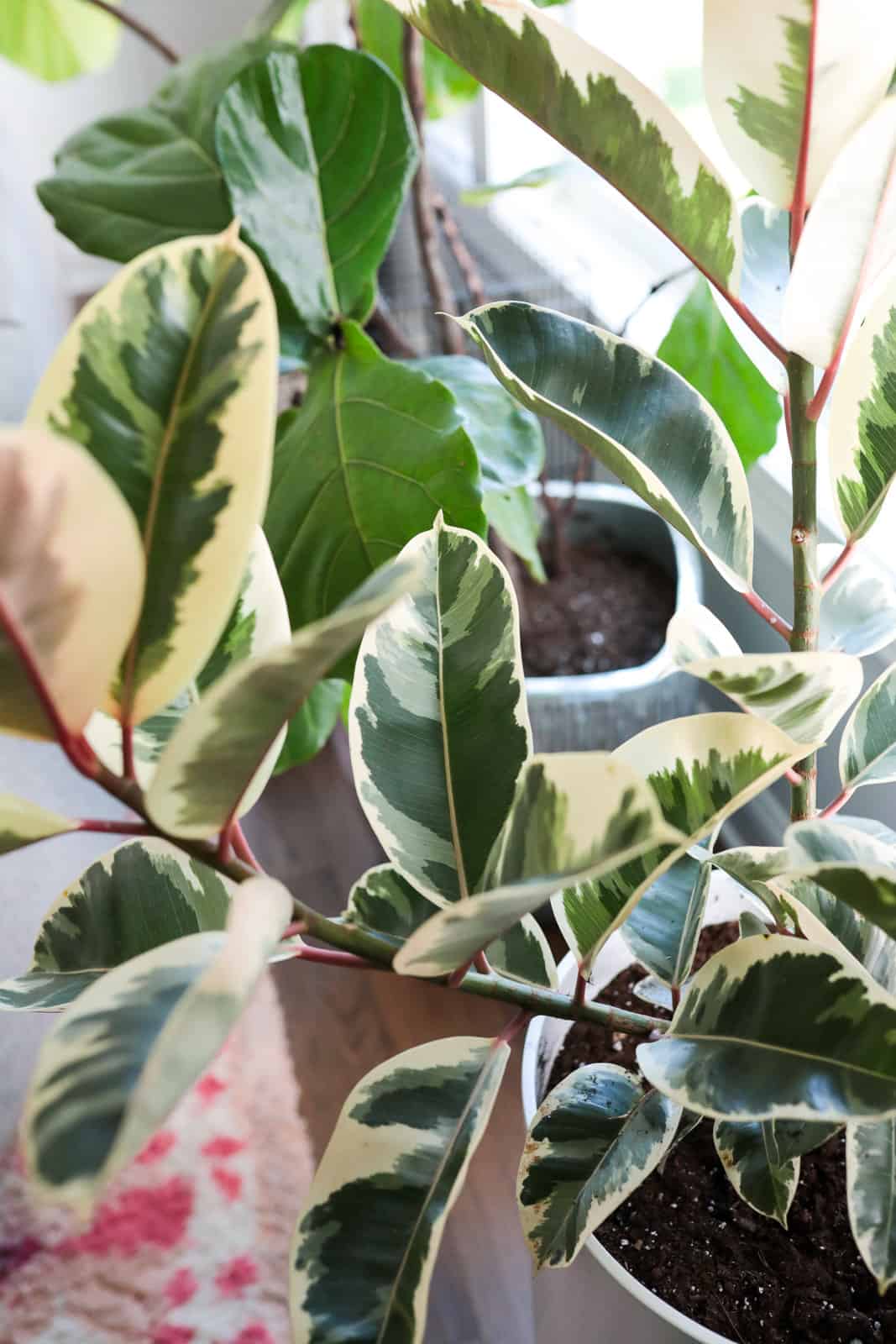
Pests and Diseases
The most common pests you will find on Variegated Rubber Plants are aphids, scale, spider mites and thrips. These pests tend to attach themselves to the leaves of the plant and suck the sweet plant juices from them. You will need to inspect your plant often to ensure there are no pests on the leaves.
If you do find pests on your plant, the first thing you should do is isolate it from your other houseplants. This will prevent the pests from transferring to other houseplants.
Insecticidal soap sprays are usually effective against rubber plant bugs, but you may have to respray every couple of weeks if the bugs persist. You can either buy a commercial spray or use neem oil to eliminate the pests.
There are several diseases that affect rubber plants. They are leaf spot disease, botrytis, rust, powdery mildew and southern blight. Root rot is also a very common problem in overwatered plants. If you notice this problem, immediately repot your plant in another pot to keep your plant from dying.
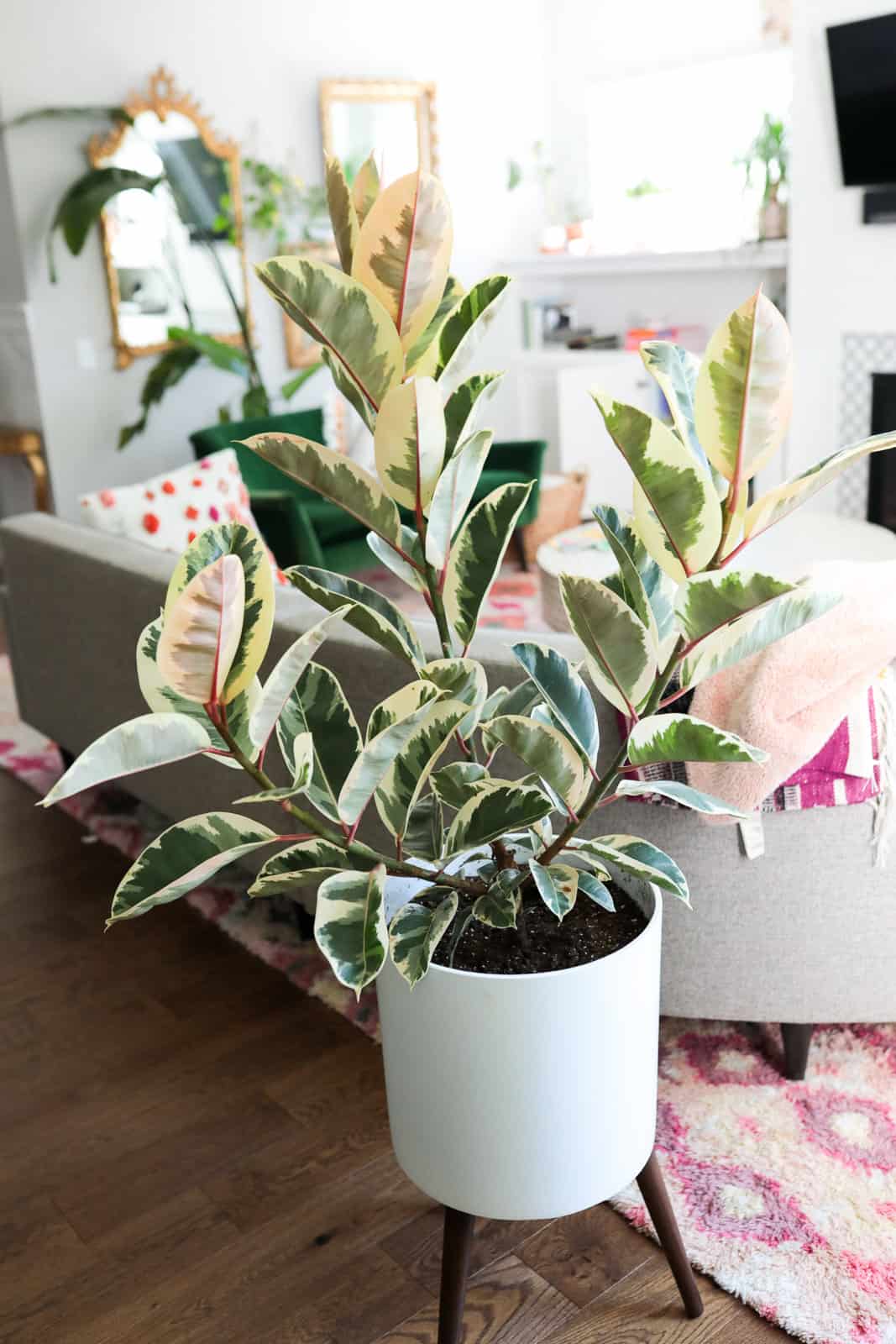
Pruning and Repotting
Your Rubber Plant won’t require much pruning. Be sure to remove any dead or dying leaves to keep the plant healthy. If you cut the top off your plant, it will cause the plant to branch out. You can do this once it reaches the desired height, but if you want it to keep growing, you should wait till it gets to the height you want it to be at.
You won’t need to repot your plant more than once every one to two years. When you do this, be sure to use a pot that is at least once to two inches larger than the current pot it is in. Also, be sure to use fresh soil as the soil also will provide necessary nutrients to your plant.
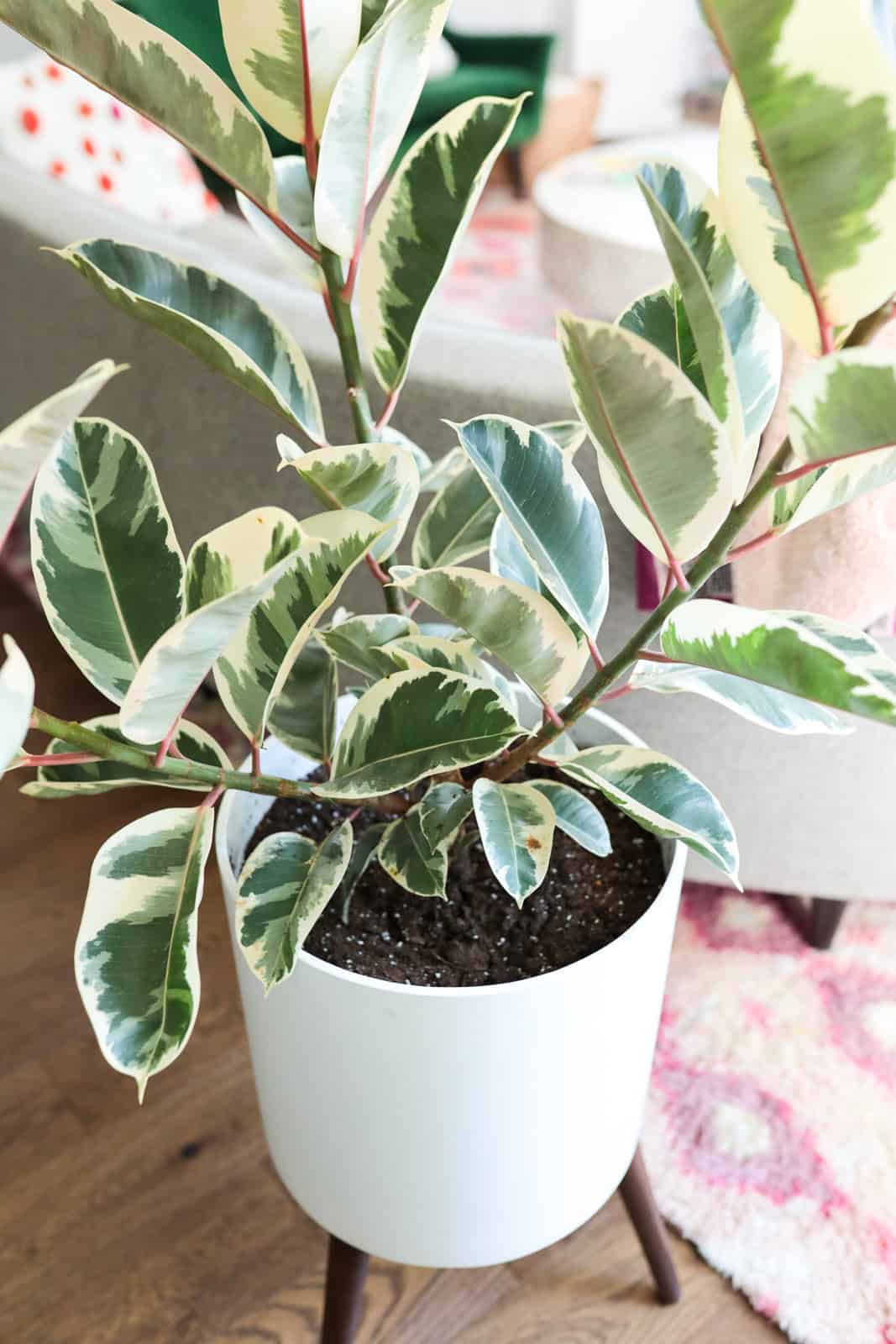
Common Problems
Yellow Leaves
It is not uncommon for the lower leaves of your plant to turn yellow and fall off once the plant gets older. However, if you have widespread yellowing of leaves, this is not a good sign! Overwatering is a cause of multiple yellowing leaves on a plant and that should be tended to to avoid this problem going forward!
Wilting Leaves
This can be a sign of dehydration of your plant. Always allow your plant soil to reach dryness to about the first one to two inches from the top. Then water the plant. Keep a regular watering schedule so that the plant doesn’t totally dry out. This will help prevent the leaves from wilting.
Leaf Drop
Over or under watering a plant can cause the leaves to drop off. If this happens, you will need to determine whether you are over or under watering. Keeping a regular watering schedule will ensure you have a healthy plant. You also need to be sure that the light conditions are correct as discussed in the light requirements section above.
FAQs
You need to maintain proper light conditions to keep the variegation intact on the leaves. If your plant is kept in too low of light conditions, the variegation will begin to fade. Keeping your plant in bright, indirect sunlight will help the variegation stay at a good level.
Yes, you should keep them dusted and clean. This will help the oxygen level to be maintained and keep your plant healthy. Use a damp cloth to wipe the leaves clean about once a week. This will ensure that the leaves aren’t clogged up with dust and dirt and will keep your plant happy!
Yes, you can put your plant outdoors in the summer, but keep it out of direct sunlight. This will prevent the leaves from becoming scorched or burned from the hot, summer sunlight. Always keep your plant in bright, filtered, indirect sunlight to ensure the leaves are kept safe.
Propagation
If you’re interested in getting new plants out fo your one plant, try propagation! Propagating your rubber tree is very easy. We have a complete guide with 3 different methods to successfully propagate your rubber fig plant!
In Conclusion
Growing a Variegated Rubber Plant may be one of the easiest things you do when it comes to keeping plants in your house or office. They are always a plant that draws notice and they look nice when placed in the right position in a room.
Once you have a beautiful Variegated Rubber Plant, you may wish to get another one. It will definitely add another dimension of beauty with its many shades and colors. As always, keep on growing!
